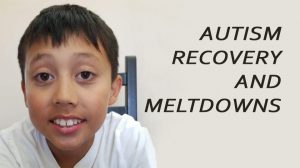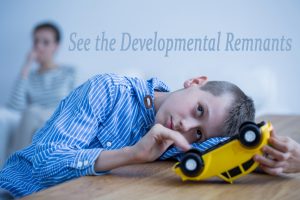 Empowering Autism Recovery
Empowering Autism Recovery
To empower your child’s autism recovery, it is critical that you become your child’s best advocate. As an advocate, you can become your child’s hero. You can help others to understand him. Consider the possibility that understanding your child’s situation from Optimum Health’s perspective can help you accomplish this goal. Look at the three concepts presented below. Please, keep an open mind and think beyond the rigid limitations of what is generally taught about autism.
See The Two-Year Old In Your Child

 Start becoming your child’s advocate by thinking of a two-year old. Think of how a two-year old child behaves. That child might walk up to a stranger, stand real close and just smile at the person. When upset, that child might throw himself on the floor in a meltdown as emotions overload his system.
Start becoming your child’s advocate by thinking of a two-year old. Think of how a two-year old child behaves. That child might walk up to a stranger, stand real close and just smile at the person. When upset, that child might throw himself on the floor in a meltdown as emotions overload his system.
Two-year old children are full of energy and have a hard time sitting still so we try to keep them busy. Now, try to picture these same behaviors on a 5-, 10- or 20-year-old. It will take a lot of imagination to learn to see what is happening to your loved one. Now, let’s consider what might be happening to your child’s brain to cause this type of behavior.
Empowering Autism Recovery: Understand The Autistic Brain
 At Optimum Health, our experiences through our autism recovery program have caused us to believe that the development of autistic children’s brains may slow down, regress or become altered in some other way by neurotoxins that target the brain. Typically, these developmental changes occur when the amount of neurotoxins accumulate to a level high enough to damage brain cells. This is generally what we have found to be the case. We simply help lower the level of neurotoxins in the brain and provide nourishment needed to heal the brain.
At Optimum Health, our experiences through our autism recovery program have caused us to believe that the development of autistic children’s brains may slow down, regress or become altered in some other way by neurotoxins that target the brain. Typically, these developmental changes occur when the amount of neurotoxins accumulate to a level high enough to damage brain cells. This is generally what we have found to be the case. We simply help lower the level of neurotoxins in the brain and provide nourishment needed to heal the brain.
Once the level of neurotoxins such as mercury decrease, your child’s brain heals. The more the brain heals, the more developmental phases the child will complete. Each developmental phase that your child still needs to complete is called a developmental remnant since it is a developmental phase left over from a previous age. You must understand what is happening in your child’s brain in order to truly become her best advocate.
Empowering Autism Recovery: Understanding Developmental Remnants
 Try to remember where your child was when regression began. It has been our experience that as autism recovery begins, the children will start developing right from the point regression landed them. As you read on, think about the developmental remnants we will present and try to picture what it might look like for your child to begin developing these remnants at the age that they are now.
Try to remember where your child was when regression began. It has been our experience that as autism recovery begins, the children will start developing right from the point regression landed them. As you read on, think about the developmental remnants we will present and try to picture what it might look like for your child to begin developing these remnants at the age that they are now.
Again, the normal development of a three-year-old looks really different on a 5-, 10- or 20-year-old, it will take a lot of imagination to learn to see what is happening to your loved one. However, if you are truly going to be an advocate, you must learn to visualize how these developmental remnants will look on your child now so you can properly support the process.
 Next:
Next:
 Eating Tips For Children With Autism
Eating Tips For Children With Autism
Success With Sleep Issues Associated With Autism
Theory Of Mind: A Key To Understanding The Thinking Of Autistic Children
Popular Related Topics
Primary Wellness Consultations
Natural Healthcare Center Location
Donations: Help Us Help Others
Email Us, How Can We Assist You?
 Start your path to optimum health by scheduling your appointment today. Member: Certified Natural Health Professionals
Start your path to optimum health by scheduling your appointment today. Member: Certified Natural Health Professionals


